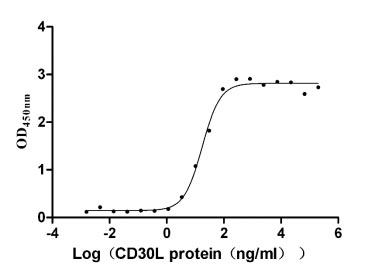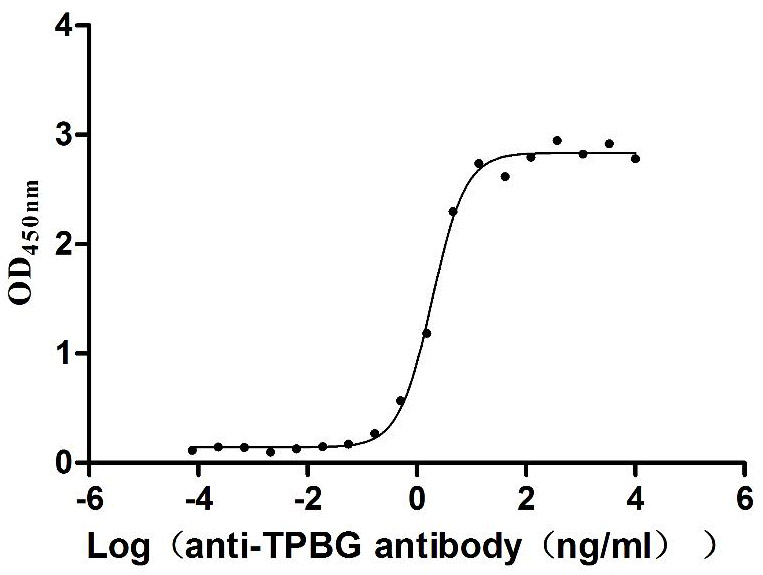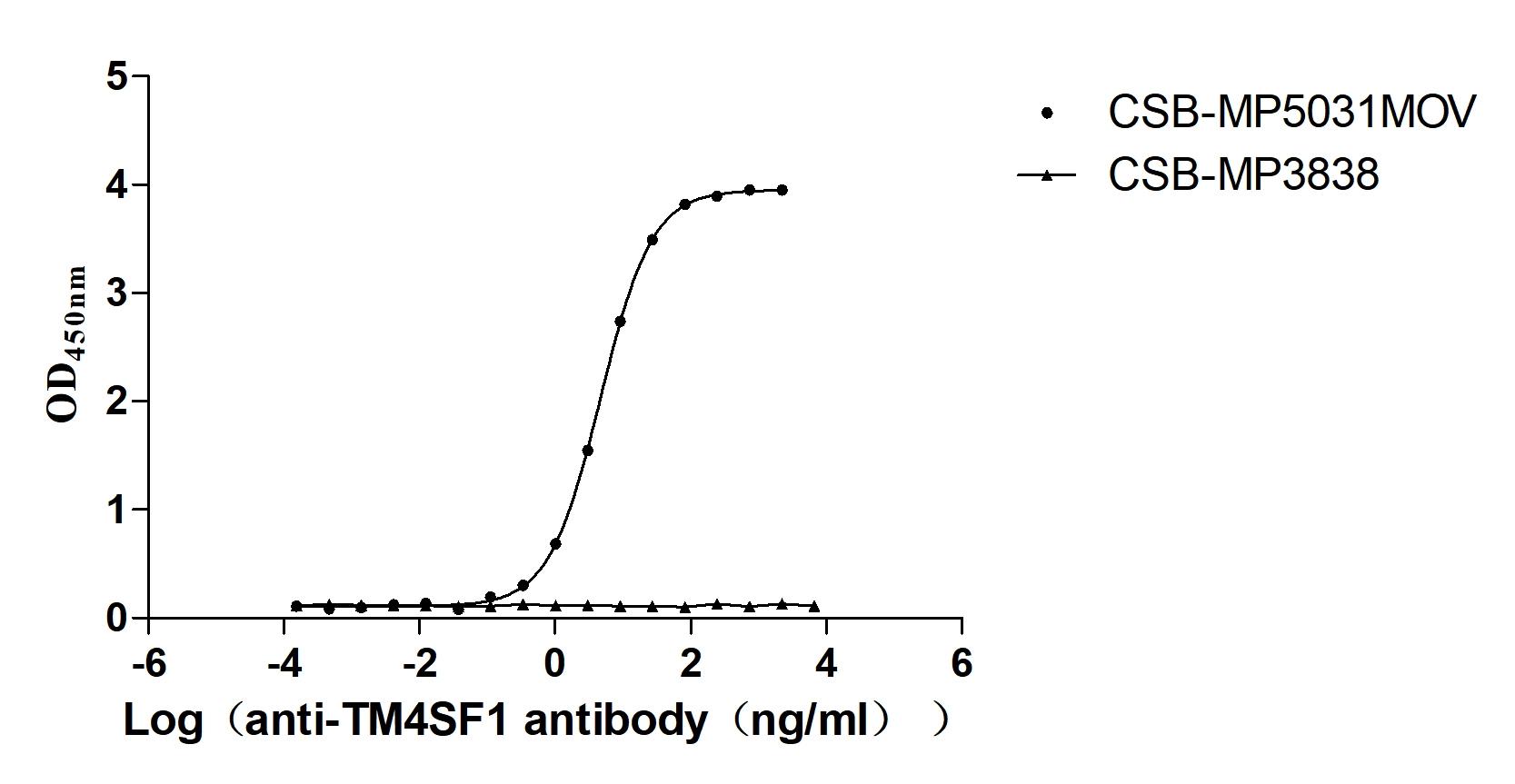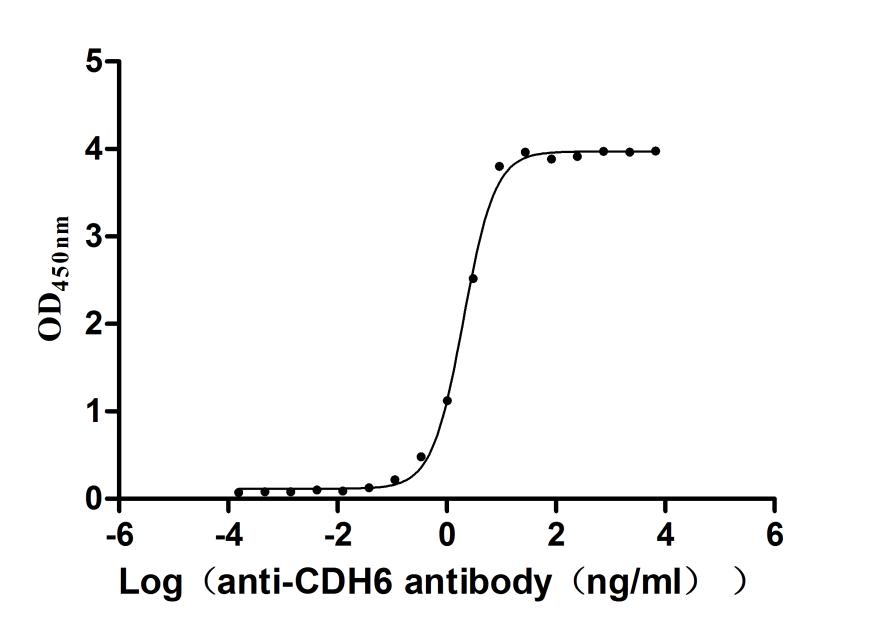Recombinant Mouse Cystatin-B (Cstb)
-
中文名稱:Recombinant Mouse Cystatin-B(Cstb)
-
貨號:CSB-YP730791MO
-
規(guī)格:
-
來源:Yeast
-
其他:
-
中文名稱:Recombinant Mouse Cystatin-B(Cstb)
-
貨號:CSB-EP730791MO
-
規(guī)格:
-
來源:E.coli
-
其他:
-
中文名稱:Recombinant Mouse Cystatin-B(Cstb)
-
貨號:CSB-EP730791MO-B
-
規(guī)格:
-
來源:E.coli
-
共軛:Avi-tag Biotinylated
E. coli biotin ligase (BirA) is highly specific in covalently attaching biotin to the 15 amino acid AviTag peptide. This recombinant protein was biotinylated in vivo by AviTag-BirA technology, which method is BriA catalyzes amide linkage between the biotin and the specific lysine of the AviTag.
-
其他:
-
中文名稱:Recombinant Mouse Cystatin-B(Cstb)
-
貨號:CSB-BP730791MO
-
規(guī)格:
-
來源:Baculovirus
-
其他:
-
中文名稱:Recombinant Mouse Cystatin-B(Cstb)
-
貨號:CSB-MP730791MO
-
規(guī)格:
-
來源:Mammalian cell
-
其他:
產品詳情
-
純度:>85% (SDS-PAGE)
-
基因名:Cstb
-
Uniprot No.:
-
別名:Cstb; Cst6; StfbCystatin-B; Stefin-B
-
種屬:Mus musculus (Mouse)
-
蛋白長度:full length protein
-
表達區(qū)域:1-98
-
氨基酸序列MMCGAPSATM PATAETQEVA DQVKSQLESK ENQKFDVFKA ISFKRQIVAG TNLFIKVDVG GDKCVHLRVF QPLPHENKPL TLSSYQTNKE RHDELSYF
-
蛋白標簽:Tag?type?will?be?determined?during?the?manufacturing?process.
The tag type will be determined during production process. If you have specified tag type, please tell us and we will develop the specified tag preferentially. -
產品提供形式:Lyophilized powder
Note: We will preferentially ship the format that we have in stock, however, if you have any special requirement for the format, please remark your requirement when placing the order, we will prepare according to your demand. -
復溶:We recommend that this vial be briefly centrifuged prior to opening to bring the contents to the bottom. Please reconstitute protein in deionized sterile water to a concentration of 0.1-1.0 mg/mL.We recommend to add 5-50% of glycerol (final concentration) and aliquot for long-term storage at -20℃/-80℃. Our default final concentration of glycerol is 50%. Customers could use it as reference.
-
儲存條件:Store at -20°C/-80°C upon receipt, aliquoting is necessary for mutiple use. Avoid repeated freeze-thaw cycles.
-
保質期:The shelf life is related to many factors, storage state, buffer ingredients, storage temperature and the stability of the protein itself.
Generally, the shelf life of liquid form is 6 months at -20°C/-80°C. The shelf life of lyophilized form is 12 months at -20°C/-80°C. -
貨期:Delivery time may differ from different purchasing way or location, please kindly consult your local distributors for specific delivery time.Note: All of our proteins are default shipped with normal blue ice packs, if you request to ship with dry ice, please communicate with us in advance and extra fees will be charged.
-
注意事項:Repeated freezing and thawing is not recommended. Store working aliquots at 4°C for up to one week.
-
Datasheet :Please contact us to get it.
靶點詳情
-
功能:This is an intracellular thiol proteinase inhibitor.
-
基因功能參考文獻:
- The data of this study show that CXCL13 expression is a hallmark of microglial activation in Cstb (-/-) mice and that the brain inflammation is linked to peripheral inflammatory changes, which might contribute to the disease pathology of progressive myoclonus epilepsy.. PMID: 27894304
- CSTB has a role in chemotaxis, antigen-presentation, and in immune- and defense response-associated processes by altering JAK-STAT pathway signaling PMID: 27355630
- Deletion of the encoding Cstb gene in Npc1-deficient mice resulted in striking deleterious effects, particularly within the cerebellum where diffuse loss of Purkinje cells was observed in young mice. This may be a consequence of damage to lysosomal membranes by reactive oxygen species (ROS), leading to the leakage of lysosomal contents that culminates in apoptosis. PMID: 26908626
- Results suggest a role for CSTB in regulating microglial activation: data link CSTB deficiency to early activation and altered functional properties of microglia, imply presence of both enhanced and suppressed immune response-related microglial functions PMID: 25327891
- the LPS-induced sepsis in StB KO mice is dependent on caspase-11 and mitochondrial reactive oxygen species but is not associated with the lysosomal destabilization and increased cathepsin activity in the cytosol PMID: 25288807
- These results indicate an in vivo role for Stfb in protecting cancer cells by promoting their resistance to oxidative stress and to apoptosis induced through the lysosomal pathway. PMID: 23955077
- Sefin B influences the expression of anti-inflammatory IL-10 in response to TLR4 agonists. PMID: 24462687
- An increase in Cstb does not induce any spontaneous epileptic activity. PMID: 22140471
- Pathologic events in the CSTB-deficient brain highlight the potential role of glial activation at the initial stages of progressive myoclonic epilepsy type 1. PMID: 22157618
- this study suggesting that the Cstb-Prmt2 region is not playing a major role in locomotor and cognitive deficits found in mice model of Down syndrome. PMID: 21047530
- Stefin B interacts with histones and cathepsin L in the nucleus PMID: 20075068
- These findings indicate that neuronal atrophy is an important consequence of cystatin-B deficiency independent of seizure events, suggesting a physiological role for this protein in the maintenance of normal neuronal structure. PMID: 12484571
- greater degree of neuronal damage was observed in CSTB-deficient than in WT mice after seizures of identical grade, indicating increased susceptibility to seizure-induced cell death PMID: 17188503
- Increased cleavage of MARCKS in brain and macrophages, but not in liver and kidney extracts of stefin B-deficient mice compared to wild-type mice, was observed. PMID: 17655504
- This study identifies a novel function for Cystatin B in defending cerebellar granule neurons from oxidative stress. PMID: 19420257
顯示更多
收起更多
-
亞細胞定位:Cytoplasm.
-
蛋白家族:Cystatin family
-
組織特異性:Widely expressed. Highest expression in heart, liver and kidney. Lower levels in brain, lung and skeletal muscle. Lowest levels in spleen and testis.
-
數(shù)據(jù)庫鏈接:
Most popular with customers
-
Recombinant Human Tumor necrosis factor receptor superfamily member 8 (TNFRSF8), partial (Active)
Express system: Mammalian cell
Species: Homo sapiens (Human)
-
Recombinant Macaca fascicularis Trophoblast glycoprotein (TPBG), partial (Active)
Express system: Mammalian cell
Species: Macaca fascicularis (Crab-eating macaque) (Cynomolgus monkey)
-
Recombinant Macaca fascicularis Transmembrane 4 L6 family member 1 (TM4SF1)-VLPs (Active)
Express system: Mammalian cell
Species: Macaca fascicularis (Crab-eating macaque) (Cynomolgus monkey)
-
Recombinant Mouse Cadherin-6(Cdh6),partial (Active)
Express system: Mammalian cell
Species: Mus musculus (Mouse)















